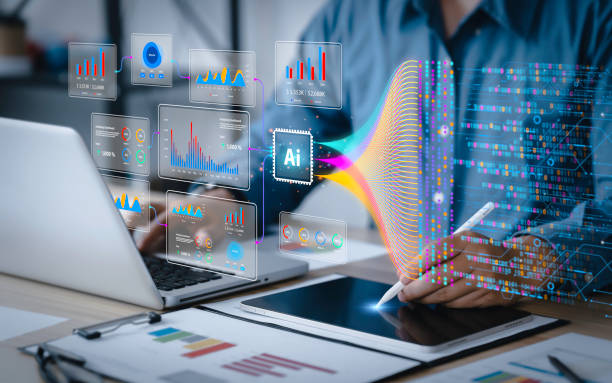The Evolution of AI Trading Bots: Transforming Market Analysis and Decision Making
The intersection of artificial intelligence and financial trading has revolutionized how markets are analyzed and traded. AI trading bots represent a sophisticated evolution in automated trading systems, combining advanced algorithms, machine learning capabilities, and real-time data processing to execute trades with unprecedented precision and speed. These systems are transforming the landscape of financial markets by offering capabilities that extend far beyond traditional human trading limitations.

How AI Trading Bots Process Market Data for Decision Making
AI trading bots employ sophisticated algorithms to analyze vast amounts of market data in real-time. These systems process multiple data streams simultaneously, including price movements, volume patterns, market sentiment indicators, and economic news. The artificial intelligence components use pattern recognition and predictive analytics to identify potential trading opportunities. Machine learning algorithms continuously refine their analysis based on historical performance and new market conditions, enabling more accurate trend predictions and trading decisions.
Technical Foundation of Automated Trading Systems
Modern automated trading systems are built on robust technological infrastructure that combines high-speed processors, advanced networking capabilities, and sophisticated software architectures. These systems utilize cloud computing resources to handle massive data processing requirements and maintain ultra-low latency connections to exchanges. The core technology includes natural language processing for news analysis, deep learning networks for pattern recognition, and specialized algorithms for risk management and portfolio optimization.
Strategic Approaches in AI-Powered Portfolio Management
AI trading bots employ various strategies to optimize investment portfolios. Common approaches include statistical arbitrage, trend following, mean reversion, and sentiment analysis. These strategies are often combined and weighted based on market conditions and risk parameters. The AI systems continuously monitor portfolio performance, automatically rebalancing positions and adjusting risk exposure as market conditions evolve. They can simultaneously manage multiple strategies across different asset classes while maintaining predefined risk levels.
Critical Considerations Before Implementing AI Trading Solutions
Before adopting an AI trading bot, several crucial factors must be evaluated. These include the system’s historical performance, risk management capabilities, and technological requirements. Organizations need to assess their infrastructure readiness, data quality, and regulatory compliance obligations. Additionally, understanding the bot’s decision-making process, monitoring capabilities, and fail-safes is essential. Cost considerations should include not just the initial implementation but ongoing maintenance, data feeds, and potential upgrade requirements.
Market Adaptation Mechanisms in AI Trading Systems
AI trading bots utilize advanced adaptive algorithms to respond to changing market conditions. These systems employ dynamic risk management protocols that adjust trading parameters based on market volatility, liquidity conditions, and overall market sentiment. Machine learning components continuously update their models based on new data, enabling the systems to identify emerging patterns and adapt their strategies accordingly. This adaptive capability helps maintain performance across different market cycles and conditions.
The emergence of AI trading bots represents a significant advancement in financial technology, offering sophisticated tools for market analysis and trading execution. While these systems provide powerful capabilities, successful implementation requires careful consideration of technical requirements, risk management protocols, and ongoing operational needs. As the technology continues to evolve, the integration of AI in trading systems will likely become increasingly sophisticated and essential for competitive market participation.




